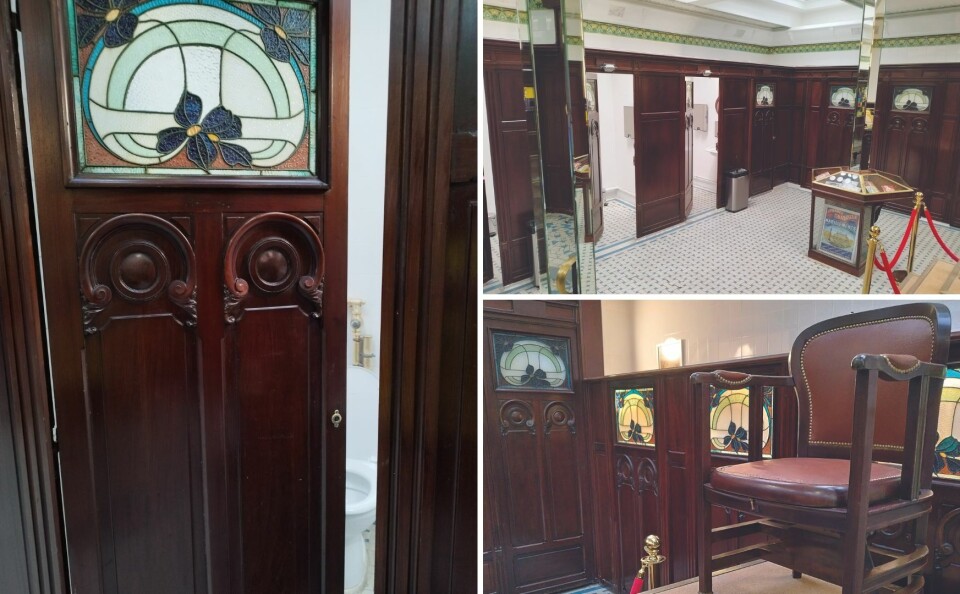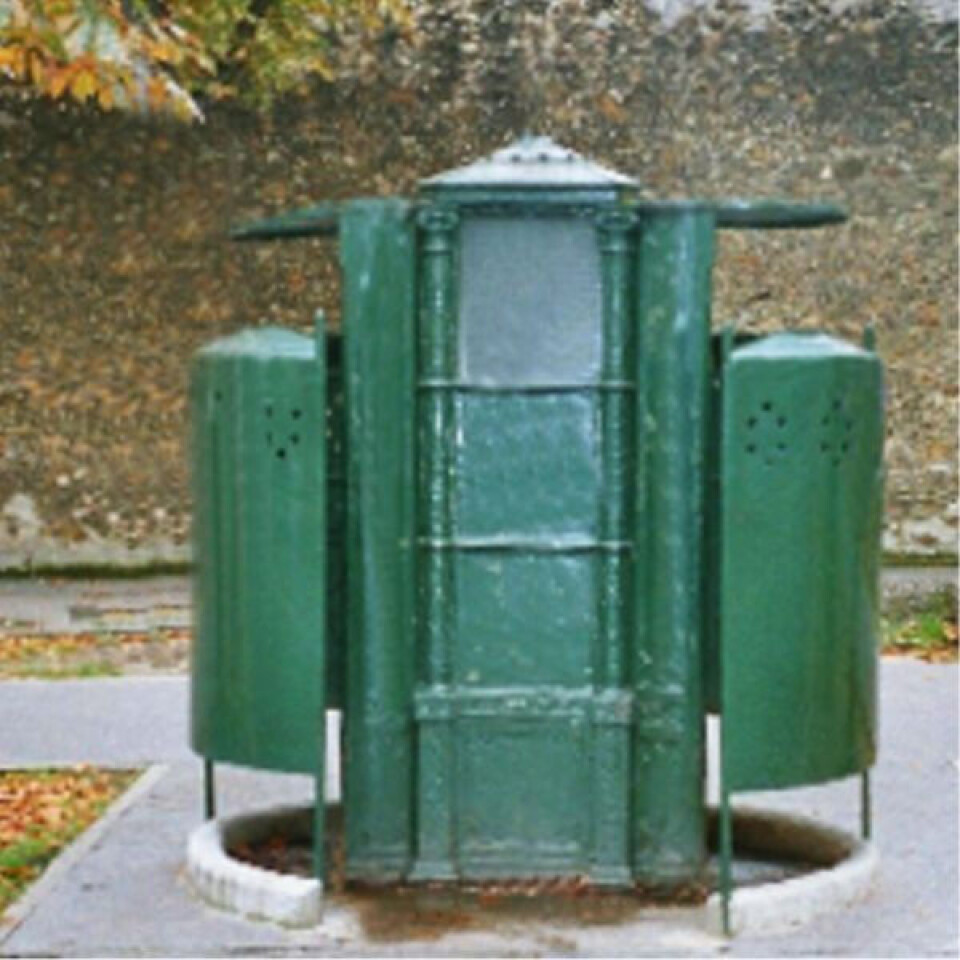-
The origins and meaning of tirer les marrons du feu
As Christmas approaches, we look at a phrase to describe someone who takes advantage of a situation
-
Owners of French mill seek help tracing history
'We are looking for old photographs from before it closed,' say couple who restored the building
-
La Baule is a classic French case study in the evolution of the grand resort
The coastal town renowned for its Belle Epoque villas, Art Deco elegance, and modernist designs, attracts tourists and remote workers alike
Belle Epoque Paris lavatory is restored as tourist attraction
We look at the history of France’s first public toilet and the social commentary behind the capital’s ‘pissoirs’

France’s first public lavatory has re-opened in Paris after more than a decade of restoration work.
Lavatory Madeleine is a Belle Epoque treasure, dating from 1905, and tells a more intimate history of the city and its inhabitants than many of the usual museums and monuments.
Its significance to French heritage has seen it listed as a monument historique and, since February, transformed into a tourist ‘must-see’ for a €2 entrance fee.
Antique shoeshine chair and Art Nouveau memorabilia
Located in Place de la Madeleine with its imposing church, it is accessed by descending a mosaic stairway and is open between 10:00 and 18:00.
It was built by French sanitaryware firm Porcher as a veritable ‘palace for hygiene’, says Julien Damon, associate professor at Sciences Po and the author of a book on public toilets.
The doors are made from mahogany and embellished with stained glass, while decorative tiling adorns the floor. The cubicles are spacious and fitted with individual washbasins.
Adding to its splendour is an antique shoeshine chair, preserved on the site along with its golden footrests – a throwback to a time when using the public conveniences was as much about freshening up appearances as relieving oneself.
Also playing to the tourist crowd is a small display of Art Nouveau memorabilia, including 19th century Paris postcards.
Read more: Find Paris’s secret village hidden in the bustling Marais district
French phrases for public lavatories
The site is run by a Dutch firm called 2theloo, which also manages Covent Garden’s public toilets in London.
However, Mr Damon says the British facilities are more focused on providing a public service rather than playing a tourism role.
Where it has borrowed from the English, though, is its name – a ‘lavatory’.
The French have navigated a range of terms for public toilets through history, from polite allusions such as petit coin to words drawing on the idea of ‘comfort’ (aisance).
The latter includes lieu d’aisance, baril d’aisance (the equivalent of a urinal), or, for women, chalet d’aisance.
More crude terms focus on the verb pisser (to urinate), such as pissotière or pissoir for street urinals.
Le trône (the throne) is also used – originating as shorthand for the rather more long-winded phrase là où le roi va seul (where the king goes alone).
Read more: Lavoirs: How these communal wash houses changed French culture
Poem describes Paris as ‘immense sewer’
Indeed, French monarchs have left their mark, so to speak, on other areas of lavatorial history too, mainly through various edicts outlawing defecation and urination on the streets, which were largely ignored.
The so-called City of Light was not immune from the problem.
French writer Alfred de Musset (1810-57) memorably referred to “this immense sewer called Paris” in one of his poems.
A solution – a form of public urinal – was introduced on street corners in Paris by the lieutenant general of the police, Antoine de Sartine, in around 1770.

Photo: The capital’s last colonne Rambuteau or vespasienne; Credit: Art Collection / Alamy stock photo
These were replaced by cylindrical stonework columns – more than 400 of them – by the prefect of the Seine department, Count Claude-Philibert de Rambuteau, in the 1830s and 40s.
Open on one side and ornately decorated on the other, they became known as colonnes Rambuteau (Rambuteau columns) in his honour.
Ornately decorated vespasiennes lacked privacy
For his part, and for obvious reasons, Rambuteau much preferred the moniker vespasiennes – a word derived from the 1st century Roman emperor Titus Flavius Vespasianus who, legend has it, placed a tax on urine collected from public toilets for use in tanning.
A shortcoming of the design was lack of privacy. Manufacturers found a solution by introducing a metal sheet on one side, only to see it colonised by advertisements and, as people huddled close to read the posters, privacy was threatened once again.
1,200 public urinals in the 1930s
Enter Georges Eugène Haussmann who, along with his whirlwind building policy along Paris’s busiest streets, introduced a second generation of vespasienne made from cast iron and accommodating two to eight stalls each.
These were coloured green to complement the natural world and typically only the central part of the user was screened from public view, with the head and feet still visible.
Paris boasted some 1,200 of these public urinals in the 1930s, at the time city officials were increasing the number of underground lavatories, such as the one in Place de la Madeleine, as part of a drive to make public conveniences more discreet.
While 567 of these urinals still existed by the late 1950s, they slowly became outdated. The last vespasienne is located on boulevard Arago in the 14th arrondissement.
Gay men flirted around the vespasiennes
Vespasiennes played another, unforeseen, role in Paris’s social history when the gay community started using them for hook-ups.
In slang of the 1900s, vespasiennes were referred to as tasses (cups). The term faire les tasses was used to mean ‘to flirt in and around vespasiennes’.
Countless writers have conjectured at great length about what happened behind vespasiennes.
Sébastien Rutés’ recent book La Vespasienne, for example, set during World War Two, makes the vespasienne an allegory of the political and moral struggles of the era.
Their ‘misuse’ was taken very seriously by the city’s vice squad. Even though their dismantling, post-war, was justified by the proliferation of private toilets within flats, the suppression of homosexual activity also played a part, said Mr Damon.
Women had to wait
As for women, it took until the late 19th century before they had their own dedicated public toilets, called chalets de nécessité.
Writer Alphonse Allais noted that France had become a ‘little Switzerland’ because of the adopted architectural style used for them. Paris counted around a hundred of them by 1914.
Paris claims most public toilets in the world
These days, the vespasienne is better known as a sanisette. There are 435 of these self-cleaning cubicles all over Paris – on busy streets, near monuments, and in public parks. They were used by 15 million people in 2019, say the city’s mairie.
Combined with public urinals, Paris now boasts around 750 public toilets. This gives the capital the claim to the most public toilets per square kilometre in the world, according to the guidebook series Lonely Planet.
Most are free to use, with the exception of a handful of sites such as Lavatory Madeleine and the public toilet on the Champs Elysées.
Related articles
Parisian photographer shows a much darker side of the City of Light
France’s stunning national library is a reader's paradise open to all
‘Brocantes’ and antique markets - a lucky dip of France's rich history
























